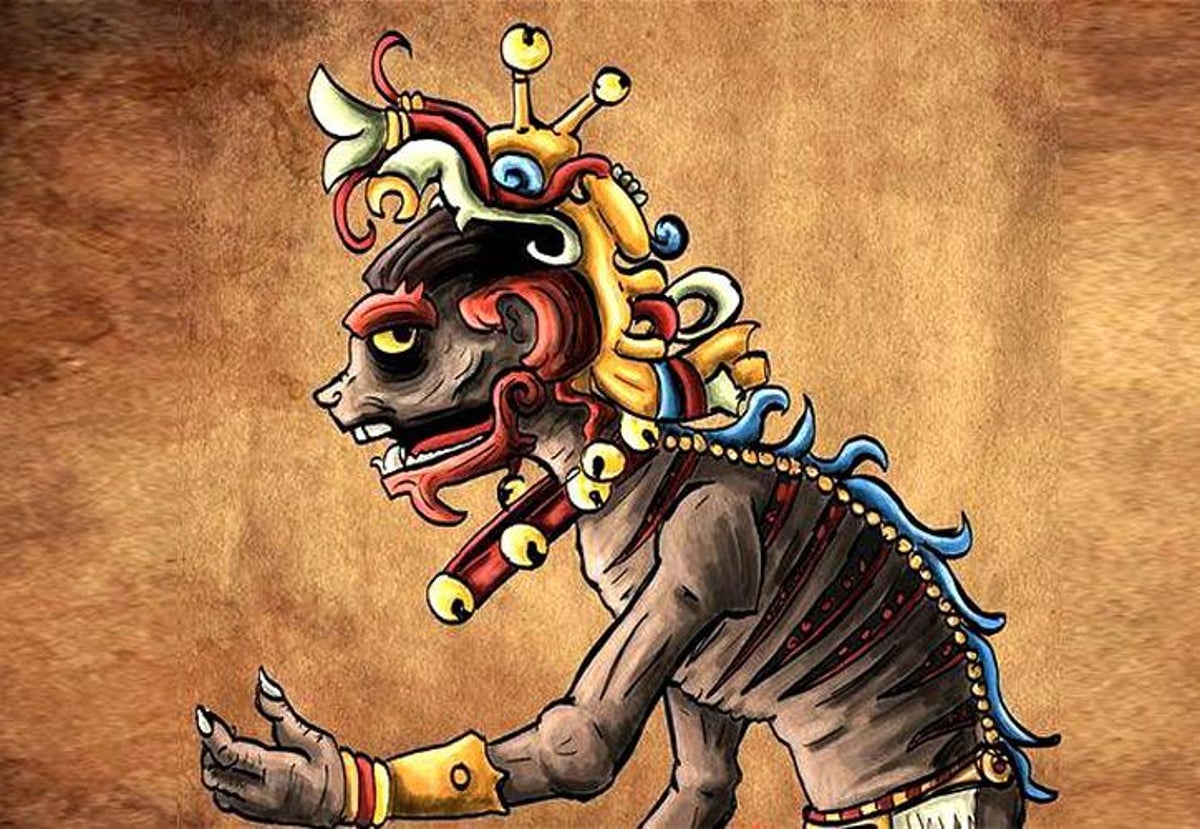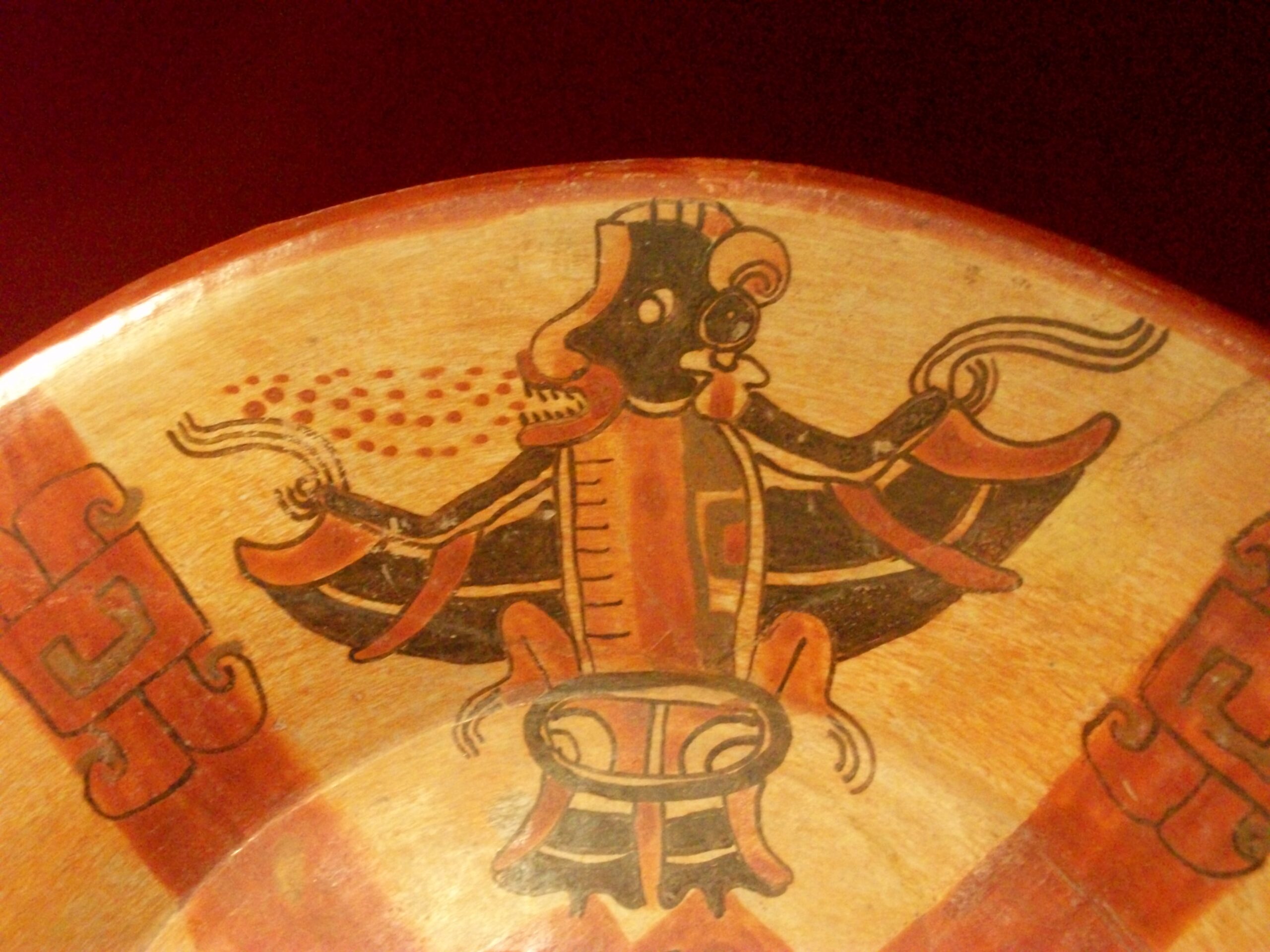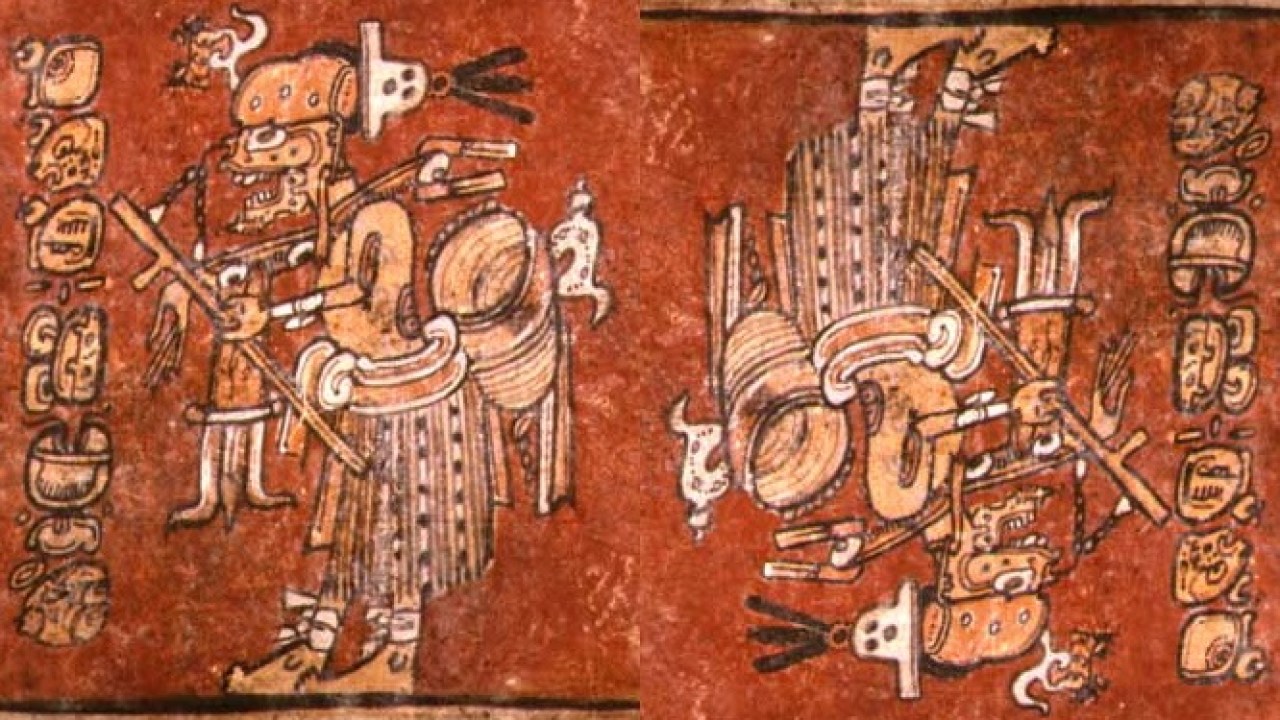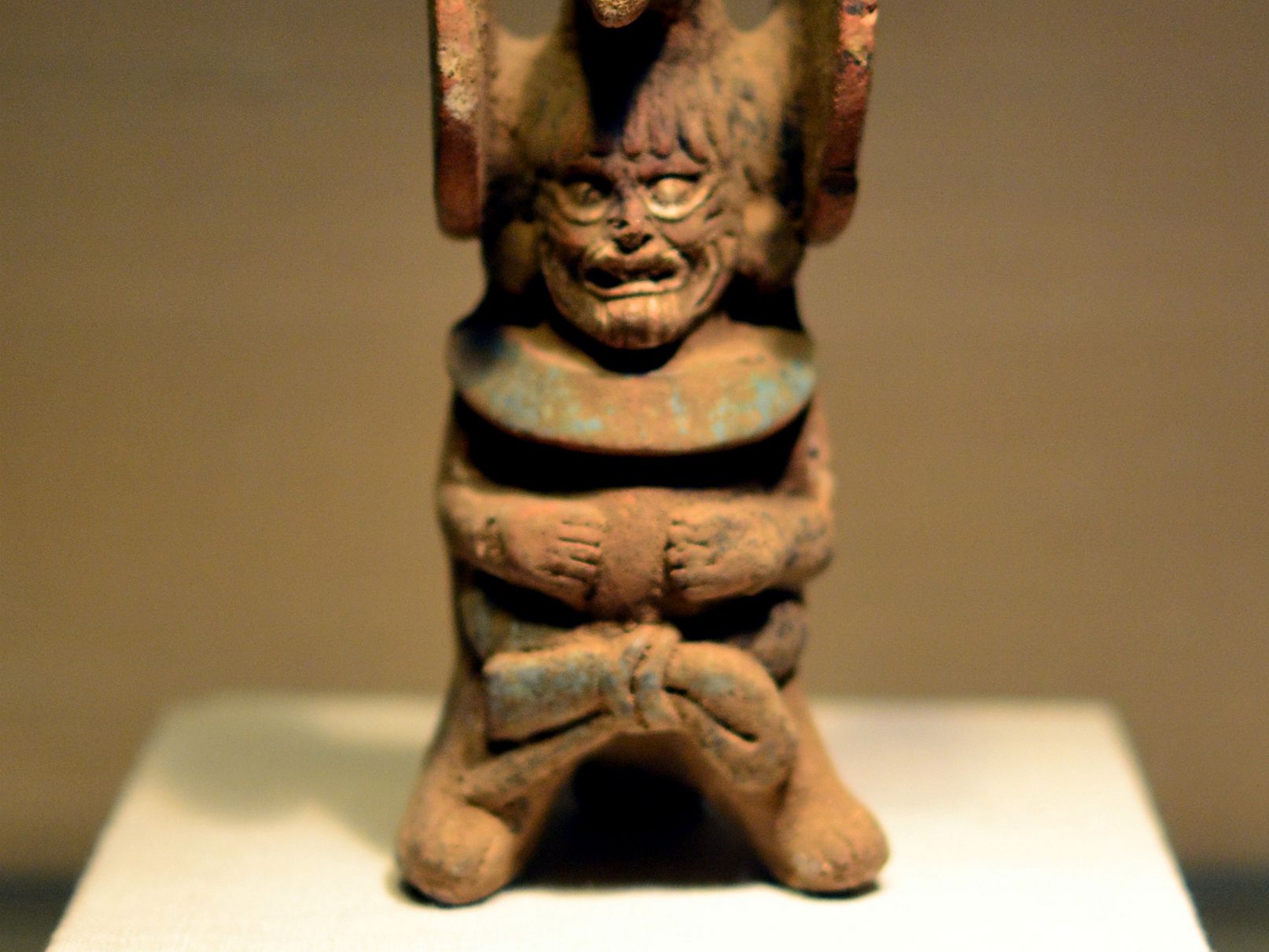The Mayan pantheon is a great display of divinities that have been worshiped in much of Mesoamerica. But not all the Mayan cities worshiped the same gods, not with the same name at least, but with the same symbolism, that is the case of yum kimil god of death and the protagonist of this article Know him!

Who is Yum Kimil?
Yum Kimil, also known as Ah-Puch, is a god of death, the absence of light, chaos, and disaster, but he is also associated with regeneration, the birth of children, and beginnings.
According to the Quiche Maya, he ruled Mictlan or Xibalba, while the Yucatec Maya present him as one of the many lords of Xibalba. The truth is that he occupied an important place in the place of fear, the underworld.
This deity is associated with Cizen, Yom Cimil / Yum Cimil, although when he was called Cizen, it becomes clear that he was imagined in a much darker way than usual.
Yum Kimil is one of the many names associated with the lord of death in the ancient Mayan religion, but strangely it was also related to childbirth and beginnings, not only with disaster and darkness.
Name and etymology
These are some of the names with which this deity of the Mayan pantheon is designated, so well known and feared in some aspects by these ancient aborigines:
- oh puch
- Hun Ahau
- hunhau
- hunahau
- Yum Cimil, Lord of Death.
- cum hau
- Cizin or Kisin
- Ah Pukuh name widely used even in Chiapas.
Why does the god Yum Kimil receive different names?
Maya city-states once occupied the region that is now Yucatan, Quintana Roo, Campeche, Tabasco, and Chiapas in Mexico and south through Guatemala, Belize, El Salvador, and Honduras.
Not all the gods were worshiped in all the city-states of the Maya with the same name, however, they generally retained the same meaning or symbology, that is, the type of god and what that god represented for the people it seems that it was. universally recognized or at least throughout the region.
An example of this can be seen in the different names that the Maya used to call the underworld, for example, the Quiche Maya of the south called their underworld Mitnal while the Yucatec Maya of the north referred to the same place as Xibalba.
Although the names were different, the characteristics of this dark land of death and terror that souls usually had to traverse after death, were the same.
Another example is the creation myths, for the Quiche, there were thirteen gods who were involved in the creation of human beings from corn, while for the Yucatecan there were only two.
Even so, the moral and message of the myths is the same, the gods struggled to create human beings just as humans struggle to carry out their own creation and survive. Also, that life comes from our land, in this case in the form of corn, the basic and sacred food of the Mayan communities, therefore, nature, embodied in the earth, must be honored and respected.
The gods participated in all aspects of the life of the Mayans and they sought to please, please and venerate them above all things. They were the center of their society and their lives.
They tried to imitate and worship them, as many deities were represented with crossed eyes, mothers hung a bead from their children's foreheads so that their eyes crossed or tied the heads of male children, to lengthen try to deform it by lengthening the forehead in emulation of some of these figures.
The clothes worn by the nobility, especially those of the ruler of a city, imitated the clothing of the gods. The way a city was planned and the precision with which the central temples were built were derived from the interpretation of the path of the gods.
There were more than 250 deities in the Mayan pantheon, but due to the massive burning of their books by Bishop Diego de Landa in 1562, much information about the Mayan culture, but especially about their pantheon, was lost forever. .
The Quiche Maya religious text, the Popol Vuh, gives a set of names for the gods that the Yucatec Maya knew by other names. Some gods remain unidentified, while the provenance of others is unclear or has been merged with other deities or Christian concepts.
The truth is that in the Mayan culture the gods had control of everything, they manipulated time, the harvest, they indicated the couple, they accompanied each birth and above all they were present at death.
They never had the same name because the Mayan empire was extensive and was divided into city-states and each one could be called and represented differently. Some divinities were related to some Mayan centers in particular or to the dynasty that ruled the city at that time.
In the case of Yum Kimil, he was known as Kitzin or Ah Puch, in Quechua he was known as Cimi and Cizin. Scholars today name him as God A.
Symbols, iconography and art
The Mayan representations of Yum Kimil or Ah Puch were of a skeletal figure that had protruding ribs and its head is a skull symbol of death, it also exhibits a necklace of eyes, a swollen figure covered with black spots that suggested an advanced state of decomposition. .
This figure was commonly associated with owls, so it was depicted as a skeletal figure with the head of an owl and its ornamentation of gold or copper bells that it always displays cannot be ignored. His Aztec equivalent is known as Mictlantecuhtli and both use bells frequently.
When depicted as Cizin, he was in the form of a dancing human skeleton smoking a cigar and wearing a ghastly necklace of human eyes dangling from his nerves.
He was called "The Stinky" because the root of his name means flatulence or stench, which is why they attributed a fetid odor to him. He is closely linked to the figure of the Christian devil, who keeps the souls of evil people in the underworld under torture.
In some scenes Chap, the god of rain, was shown planting trees and on the other hand Cizin uprooting them. In addition, there are representations where he is seen with the god of war in scenes of human sacrifice.
The domains of Yum kimil according to the references left by the Mayans are: death, the underworld, chaos and disaster, darkness and the total absence of light, in addition to childbirth and beginnings.
History and origin of Ah Puch
The origin of this divinity of death is unknown, it is not known where it originated from, if it was always the lord of the underworld and if it is a descendant of some god, as indicated above, much of the information on the Mayan culture was destroyed by representatives religious during the conquest and colonization of America.
Yum Kimil or Ah Puch ruled Mitnal, the lowest level of the Mayan underworld, as lord and ruler of death, his figure is constantly related to the gods of war, disease and sacrifice, who were always his allies.
Both Aztecs and Mayans associated death with jaguars, dogs and owls, so this divinity was usually accompanied by one of these animals. Strangely, despite being a figure associated with labor and birth, he is described as acting against the gods of fertility.
Relations and kinship of Yum Kimil
No descendants are known of him, however, he is the husband of the goddess Ixtab or Xtabay and cataloged as the eternal rival of Itzamná. So much so that both are the only gods to have two hieroglyphs for their name.
In the case of Yum Kimil the first is the head of a corpse with its eyes closed, the second is the head of the god with a crushed nose, skinless jaws and a flint knife used to perform sacrifices, this one serves as the of prefix.
mythology and legends
Much is unknown about Yum Kimil's mythology, although he is considered one of the oldest deities in the Mayan pantheon and appears more than eighty times in three ancient manuscripts.
However, he is only mentioned as ruler of the North in the Book of Chilam Balam of Chumayel. While in the Popol Vuh he is Ahal Puh and is considered one of Xibalba's helpers and allies.
The Mayans and death
In the Mayan culture, both life and death are stages or parts of a cycle that maintains balance and harmony on earth and between the energies that are part of it, it is like light and darkness, water and fire. absolutely necessary.
Death in this case was an aspect of great relevance in Mayan thought, it was generally thought that it could be the product of divine punishment, because the gods had been disturbed in some way.
When a person dies, the body stops working and the spirit detaches, once out of it the soul must start a new journey. The spirit goes to a world very different from the one it inhabited in life, the path through the underworld. Divided into nine descending levels each with a lord who is responsible for monitoring:
- First level: CHICONAHUAPAN.
- Second Level: TEPECTLI MONAMICTLAN.
- Third Level: IZTEPETL.
- Fourth Level: ITZEHECAYAN.
- Fifth Level: PANIECATACOYAN.
- Sixth Level: TIMIMINALOAYAN.
- Seventh Level: TEOCOYOHUEHUALOYAN.
- Eighth level: IZMICTLAN APOCHCALOLCA
- Ninth level: CHICUNAMICTLAN.
https://youtu.be/EngSvY_hbqE
The last and deepest is known as the place where Yum Kimil or Ah Puch dwells, the god of the dead, the emaciated. The Mayan stories indicate that the underworld can be accessed through different entrances on earth. It is said that the most important were the caves and cenotes, natural cavities and caverns that are usually deep and have always been associated with the habitat of different mystical beings.
Considered a very difficult and painful journey, the Mayans, when burying the body of their loved ones, place offerings of food and in some cases animals to guide them on their journey. When the deceased was of the aristocracy, servants and some women were sacrificed to attend him during the journey.
What were the Mayan burials like? “Dead, they shrouded them, filling their mouths with ground corn, which is their food and drink that they call koyem, and with it some stones that they have as currency, so that in the afterlife they would not lack eat. They were buried inside their houses or behind their backs, throwing some of their idols into the grave; and if he was a priest, some of the books of him. (Landa,1566).
When the soul of the deceased reaches the last level, which was its final destination in the world of the dead and overcome all obstacles, the soul was free and became an ancestor that protected and interceded for loved ones who were still alive and then on his way through the world of the dead.
How was Yum Kimil worshipped?
The Mayans feared death, much more than the other cultures that spread throughout Mesoamerica, so the figure of the lord of death was considered a heartless hunter who stalked the houses of people who had been injured or were sick.
When the Mayans lost a loved one, they gave themselves over to a time of mourning and mourning that was quite rigorous, even extreme. It was believed that the louder the cries, the faster Yum Kimil would go to Xibalba out of fear and not take anyone else with him.
If this article was interesting for you, do not hesitate to consult other links on our blog:



